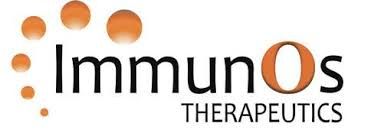预约演示
更新于:2025-05-07
LILRB1 x KIR3DL1 x LILRB2
更新于:2025-05-07
关联
2
项与 LILRB1 x KIR3DL1 x LILRB2 相关的药物作用机制 KIR3DL1抑制剂 [+2] |
非在研适应症- |
最高研发阶段临床1期 |
首次获批国家/地区- |
首次获批日期1800-01-20 |
作用机制 KIR3DL1抑制剂 [+3] |
在研适应症 |
非在研适应症- |
最高研发阶段临床前 |
首次获批国家/地区- |
首次获批日期1800-01-20 |
1
项与 LILRB1 x KIR3DL1 x LILRB2 相关的临床试验NCT05763004
A Phase 1a/1b, First-in-human, Open-label, Non-randomized, Multicenter, Dose Escalation and Cohort Expansion Study to Evaluate the Safety, Tolerability, Efficacy, Immunogenicity, Pharmacokinetics, and Pharmacodynamics of IOS 1002 Administered Alone and in Combination with Pembrolizumab, a PD-1 Monoclonal Antibody in Advanced Solid Tumors
The goal of this clinical trial is to learn about IOS-1002 in patients with solid tumors.
The main questions it aims to answer are:
* To determine the safety and tolerability of various doses of IOS-1002 administered alone and/or in combination with KEYTRUDA® (pembrolizumab) in a single dose escalation scheme
* To determine the safety, tolerability and efficacy of a selected dose of IOS-1002 administered every 2 weeks alone and in combination with a PD-1 Antibody
The study will be conducted in 3 parts:
* Part A (Phase 1a, monotherapy and combination therapy dose escalation): IOS-1002 alone and IOS-1002 plus PD-1 mAb in patients with advanced solid tumors
* Part B (Phase 1b, monotherapy cohort expansion): IOS-1002 alone in patients with advanced solid tumors
* Part C (Phase 1b, combination therapy cohort expansion): IOS-1002 plus PD-1 mAb in patients with advanced solid tumors.
The main questions it aims to answer are:
* To determine the safety and tolerability of various doses of IOS-1002 administered alone and/or in combination with KEYTRUDA® (pembrolizumab) in a single dose escalation scheme
* To determine the safety, tolerability and efficacy of a selected dose of IOS-1002 administered every 2 weeks alone and in combination with a PD-1 Antibody
The study will be conducted in 3 parts:
* Part A (Phase 1a, monotherapy and combination therapy dose escalation): IOS-1002 alone and IOS-1002 plus PD-1 mAb in patients with advanced solid tumors
* Part B (Phase 1b, monotherapy cohort expansion): IOS-1002 alone in patients with advanced solid tumors
* Part C (Phase 1b, combination therapy cohort expansion): IOS-1002 plus PD-1 mAb in patients with advanced solid tumors.
开始日期2023-03-15 |
申办/合作机构 |
100 项与 LILRB1 x KIR3DL1 x LILRB2 相关的临床结果
登录后查看更多信息
100 项与 LILRB1 x KIR3DL1 x LILRB2 相关的转化医学
登录后查看更多信息
0 项与 LILRB1 x KIR3DL1 x LILRB2 相关的专利(医药)
登录后查看更多信息
2
项与 LILRB1 x KIR3DL1 x LILRB2 相关的文献(医药)2007-05-01·European Journal of Immunology3区 · 医学
Interaction of HLA‐B27 homodimers with KIR3DL1 and KIR3DL2, unlike HLA‐B27 heterotrimers, is independent of the sequence of bound peptide
3区 · 医学
Article
作者: Li Ye Chen ; Kati di Gleria ; Cynthia Wright ; Antoni Chan ; Paul Bowness ; Simon Kollnberger ; Andrew McMichael ; Mei-Yi Sun
2001-11-15·The Journal of Immunology2区 · 医学
Cutting Edge: Leukocyte Receptor Complex-Encoded Immunomodulatory Receptors Show Differing Specificity for Alternative HLA-B27 Structures
2区 · 医学
Article
作者: Trowsdale, John ; Wilson, Michael J. ; Haude, Anja ; Allen, Rachel L. ; Raine, Tim
分析
对领域进行一次全面的分析。
登录
或

生物医药百科问答
全新生物医药AI Agent 覆盖科研全链路,让突破性发现快人一步
立即开始免费试用!
智慧芽新药情报库是智慧芽专为生命科学人士构建的基于AI的创新药情报平台,助您全方位提升您的研发与决策效率。
立即开始数据试用!
智慧芽新药库数据也通过智慧芽数据服务平台,以API或者数据包形式对外开放,助您更加充分利用智慧芽新药情报信息。
生物序列数据库
生物药研发创新
免费使用
化学结构数据库
小分子化药研发创新
免费使用
